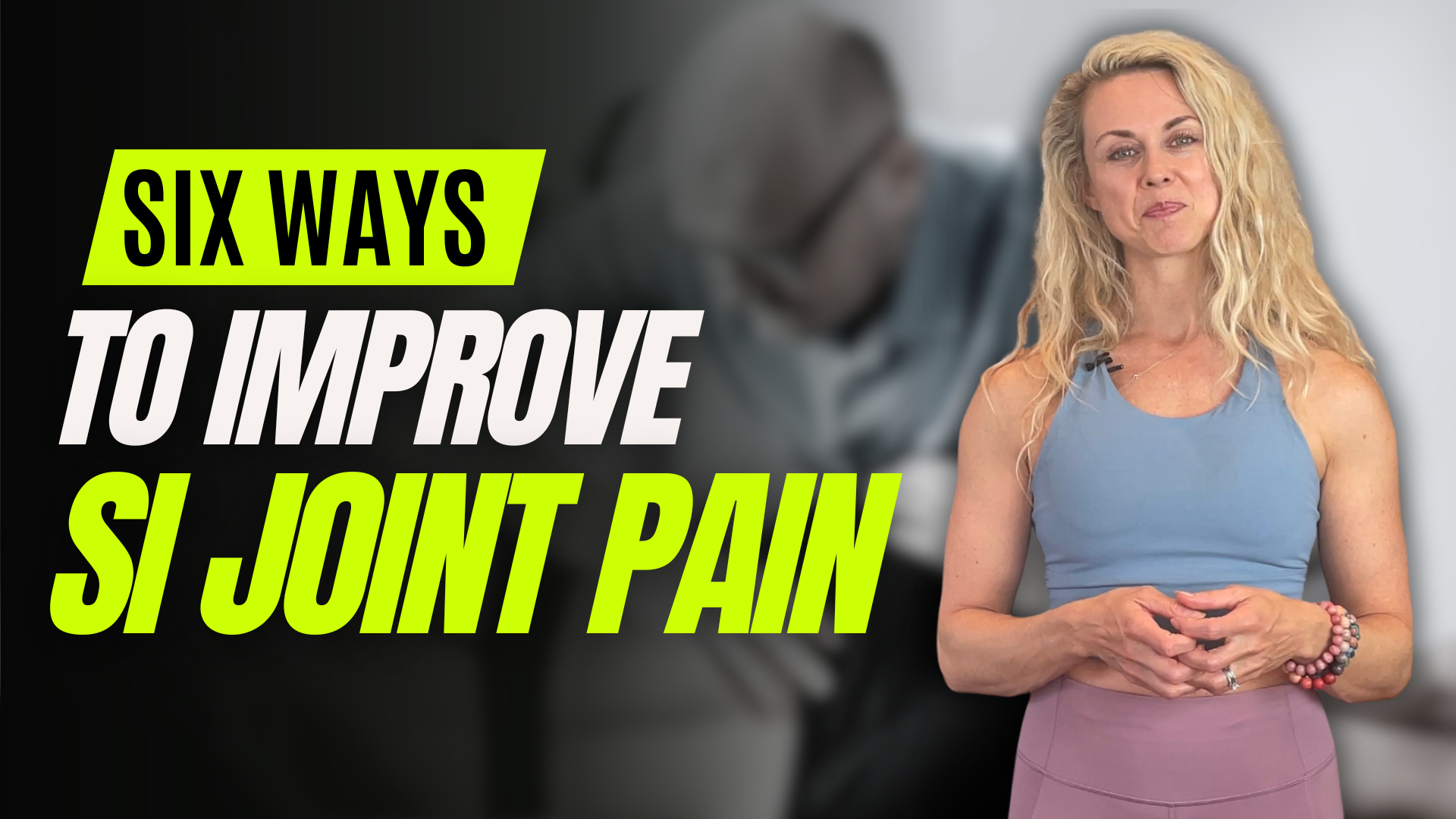Struggling with SI joint pain even after physical therapy? You’re not alone. This pain can be frustrating, but the good news is there are often solutions. In this blog, we’ll explore six common causes of SI joint pain and offer targeted strategies to get you back on track. We’ll go beyond generic exercises and delve into specific approaches to address the root of your discomfort. Here’s how to improve SI joint pain.
Rather watch or listen?
What is the SI Joint?
When looking at the pelvis from the back, consider the bones: the sacrum, a triangular bone, and the ilium on each side. These pelvic bones are connected by various ligaments, including the sacrotuberous and sacrospinous ligaments, creating force and forming closure on the SI joint. Pain typically occurs in the lower back region, often near the bony bumps, but it can also present in different areas around the pelvis.
The SI joint is very stable due to its self-locking mechanism, known as form-force closure. This stability depends on the forces entering the joint. For example, a vertical load creates stability through form, while different forces transmitted through the joint also contribute to stability.
Six Causes of SI Joint Pain and How to Improve Them
1. Asymmetry
Most people with SI joint pain experience it on one side. Our bodies are asymmetrical due to the placement of organs like the liver, pancreas, and spleen. Daily activities, such as writing with one hand, driving, and crossing legs, can exacerbate these asymmetries. This can lead to changes in the diaphragm and respiration, affecting the stability of the entire integrated unit. For instance, a pattern of crossing the right leg may lead to internal hip rotation and weaker external rotation, contributing to pain.
2. Force Transfer
Asymmetries affect how we transfer force through our bodies. Our fascial tissue, a 3D network, plays a crucial role in this process. The deep longitudinal line, which includes the lower leg, hamstrings, hip rotators, and low back muscles, is essential for force transmission. Compensations and imbalances, such as flat feet or tight lower leg muscles, can impact this line and contribute to SI joint pain.
Optimal stability and reflexive stabilization from the deep front fascial line, which includes the foot, inner thighs, pelvic floor, diaphragm, and even the tongue, are critical for SI joint mobility and stability. Ensuring all the surrounding musculature is stable is essential for effective force transfer.
3. Foot Position
Foot position can influence SI joint pain. Overly everted (turned in) or inverted (high-arched) feet can stress the SI joint. A rotated-in, flatter foot may lack deep stability for proper force generation, while an externally rotated foot can stress the SI joint ligaments. Achieving a neutral foot position through mobility and stability exercises can help balance the lower leg and reduce stress on the pelvis.
4. Breathing
Proper breathing involves positioning the diaphragm correctly, with the rib cage over the pelvis in a stacked position. This allows the diaphragm to communicate efficiently with the pelvic floor. An open scissors posture, where the pelvis is tipped down and the rib cage up, can cause compression on the SI joint. To improve breathing, keep the tongue on the roof of your mouth, breathe through your nose, and focus on a 360-degree breath. Exhale with the abdomen contracting while maintaining a stacked position.
5. Pelvic Mobility
While stability is crucial, pelvic mobility is equally important, especially during gait. SI joint issues often involve mobility problems. The pelvis should move forward, backward, rotate, and side bend for optimal movement. Practicing pelvic movements while lying down and coordinating with your breath can restore natural fluid movement in the pelvis.
6. Integration
To bring it all together, stability, sequencing, timing, coordination with breath, foot position, and addressing asymmetries are essential. An effective exercise to integrate these elements is the short foot exercise.
How to do the Short Foot Exercise:
- Step with one foot forward and the other foot slightly back, creating a small kickstand.
- Hinge at the hip.
- Breathe in through your nose, exhale, and gently root the tips of your toes into the ground.
- Breathe in with the tongue at the roof of your mouth, exhale, and root the tips of your toes into the ground.
- If this feels easy, progress to a single-leg stance.
This exercise promotes reflexive stabilization from the foot, enhances breath control, and engages deep stabilizers. It helps integrate stability and mobility for optimal pelvic movement and efficiency.
If this was helpful, please give it a like, share it, and subscribe to our YouTube channel, the Movement Paradigm, for weekly tips on mindset, nutrition, and movement. Our goal is to help you live your best life, heal, transform, and, more importantly, thrive.
You can always join us in our app, the Movement Paradigm. We have lots of challenges every other month—everything from movement to the nervous system, nutrition, and so on. And we have a great community of people.
You can also reach out to us for an individual appointment for functional medicine or holistic physical therapy. If you really want to get to the root cause, please reach out to us.
Other things that might interest you:
5 Steps to Addressing SI Joint Pain | the Truth About SI
What you need to know about hip bursitis
Why you should consider eliminating gluten and dairy | Elimination Diet


